Phoneme Grapheme Mapping Activities That Develop Orthographic Mapping
This post may contain affiliate links, and I will earn a commission if you purchase through these links. Please read the disclosure policy for more details.
Orthographic mapping is the process where children learn to recognize each letter of the alphabet and how each letter represents one sound. It’s how words become sight words. In this post, you’ll learn about how orthographic mapping develops, and how to use phoneme grapheme mapping in your literacy instruction to develop students’ orthographic mapping skills.
These phoneme grapheme mapping activities follow what the science of reading research shows is most effective for literacy instruction.
SCIENCE OF READING QUICK START GUIDE
Grab your FREE guide with the 5 tools you need to get started with SOR!
*Most school spam filters block my emails, so please use a personal email.

What is orthographic mapping?
Orthographic mapping, also called word mapping or phoneme-grapheme mapping, is how words become sight words.
Orthography refers to a system for representing sounds or spoken language with letters or other symbols, such as punctuation marks. Or it can refer to an individual’s handwriting style or keyboarding technique because these motor skills are involved in writing out words phonetically (i.e., spelling). The term “orthography” also has a more specific meaning within linguistics: namely that of referring only to the appearance of written language on paper, excluding any consideration of the sound of speech.
Orthographic mapping is how students learn to recognize each letter of the alphabet and how each letter represents one sound. For example, if a student says “O” when you ask them what letter says its name (The letter O), this indicates that they have acquired orthographic mapping for that sound and letter.
This is not an activity that you can do – it’s a mental process happening in the background as students learn to read.
What is the difference between decoding and orthographic mapping?
Decoding is breaking down words into sequences of sounds in order to determine the appropriate pronunciation. Orthographic mapping is recognizing the visual outline of a word and using that word without having to sound it out. It’s recognizing the sequence of letters that makes the word.
Decoding looks like sounding out words, but if a word was already orthographically mapped it would be read instantly.
What are sight words?
Sight words are the words that we learn to recognize and read without having to sound them out or break them into parts.
As we continue to read, we build a sight word vocabulary. This is because words and word parts become orthographically mapped over time. They are now stored in long term memory.
If you’re interested in teaching high frequency words (aka sight words) in a way that develops orthographic mapping, check out my Heart Words Method blog post.
How does orthographic mapping develop?
When children are learning to read, they first start by sounding out each individual sound within a word. They will still be building their vocabulary of sight words at the same time.
Over time, they begin to recognize patterns in what they are reading because certain sounds appear over and over again in words.
They will eventually be able to read these patterns/units quickly without sounding them out every time.
For example, say students have read the word mat so many times that they now come across pat and sat and can read the –at part quickly because it has been orthographically mapped.
When children are introduced to new words, they use their sight word vocabulary to decode the new word because they have already created orthographic maps for these words.
But for this to happen, students need to be proficient in phoneme awareness and have automatic letter-sound associations. Therefore, students need lots of activities focusing on phonemic awareness and letter-sound associations in the early years.
According to David Kilpatrick, Ph.D., author of Equipped for Reading Success, with explicit instruction of phoneme-grapheme relationships (e.g., letter/sound correspondence), children can begin to read new “pseudowords” as accurate as 30% of the time by the end of second grade and 100% accuracy by the end of third grade (page 65-66).
The Role of Advanced Phonemic Awareness in Orthographic Mapping
According to Kilpatrick, weak readers do not naturally acquire orthographic mapping because they lack advanced phonemic awareness skills.
For these students, it is important to provide intervention in phoneme addition, deletion, and substitution.
Below is an example:
- Say the word nap. Have the student repeat it.
- Ask them to say it again without the /n/. Be careful to say the sound /n/ and not the letter. The student should say -ap.
- Ask them to say nap again, but this time instead of /n/ say /l/. The student should say lap.
- Ask the student to say lap, but add a /s/ to the beginning. The student should say slap.
Now you would not actually do it as above as those tasks are on different difficulty levels, but I just wanted to give you an example of what advanced phonemic awareness tasks look like. You usually focus on one at a time, like just deleting the beginning sound, then you move on to deleting the ending sound.
Check out my daily Phonemic Awareness Task Cards for quick daily activities that include advanced phonemic awareness skills.
Phoneme Graphing Mapping Activities To Develop Orthographic Mapping
Aside from doing phonological and phonemic awareness activities like the ones above, phoneme-grapheme mapping also develops orthographic mapping.
What is Phoneme-Grapheme Mapping?
Phoneme grapheme mapping is a visual way to represent the relationship between phonemes (sounds) and their graphemes (letters). Students connect the sound they hear with the letter or letters that represent that sound.
This can also be called word mapping. The template pictured below is part of my SOR Quick Start Guide.

Word Mapping Activities
Here is how you would phoneme-grapheme map any word:
- Say the word. Students repeat the word.
- Finger tap the word to sound it out and count the phonemes.
- Use a manipulative to represent each sound. You can draw something on the board, like a line or dot to do this. It helps to use a different color for each sound.
- Spell each sound. Ask students what letters make the sound. Write the letters above the manipulative used to represent the sound. Students write the letters that represent each sound in the boxes.
- Discuss any irregular spelling patterns. Talk about the origin of the word, or the rule or pattern to help students remember it. Draw a heart above the tricky letters. Tell students they need to remember this part by heart.
- Ask questions relating to the sequence of the letters: What’s the first sound? Which letter says /b/? What sound does the letter t say? What letter comes after the /b/ sound?
- Students slide their finger across the line under the boxes while saying each sounds to blend the word.
- Students read the word aloud.
- Students write the word on the lines saying each letter as they write it.
You can grab my free template (pictured above) from my freebies library, or the paid version (pictured below) which includes teaching tips, lesson outline, and blank templates for words with 2 to 5 sounds.
I use the Heart Word Method for irregularly spelled high frequency words. You can read more about that here, and find my Heart Words Mapping templates below.
Elkonin Boxes
Long time readers know how I love Elkonin boxes! I use them all the time because they really help develop these critical reading skills all students need.
Use sound boxes with chips to count phonemes, match phonemes to sounds, write the graphemes (letters) in the boxes to spell words, blend sounds together, delete, add, and substitute sounds, and more!
Grab my free sound boxes template in my freebies library.

Rimes
The rime is the word part that follows the onset of a word.
In the word sat, the onset is /s/ and the rime is /at/.
Working with rimes helps develop automaticity.
Start off with 2 sounds. Let’s use the example word top. Start with /o/ and /p/. Have students map those 2 sounds and blend them together to say /op/.
Next, add a sound before the /op/. Say something like, “this manipulative says /t/” and place it before /op/. Ask students to say the new word. Ask them to underline /op/.
Do this with a few other words and ask students to find the letters that say /op/ in all the words.
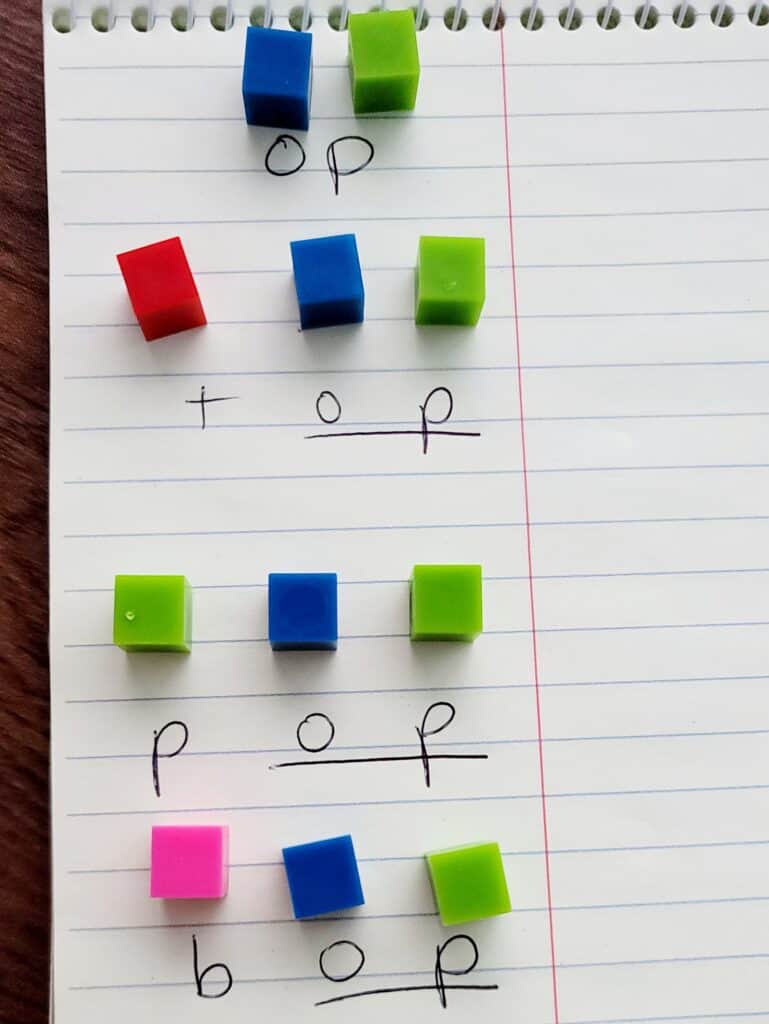
Blending Drills With Rimes
Another rime activity is using phonogram cards (phonics sound spelling cards) to blend initial sounds with a rime.
Set up 3 piles of phonogram cards: the initial sound, and the 2 cards that make the rime. Then swap the initial letter so students can sound out the new word using the same rime.
Using the image below as an example, you would swap the p card to reveal a new letter. Continue swapping that initial sound. Students should focus on decoding that sound, and quickly blend it with /ain/ so they’re not sounding out /ain/ every time the initial sound is changed.
You can buy the phonogram cards I use here.
Word Sorts
Word sorts work with rimes so be sure to teach rimes first.
You can create word sort walls in the classroom too, to display some of the rimes you have taught and have students practice drills blending the onset and rime.
Silicone Bubble Poppers
Students love using these bubble poppers and they’re such a great tool for segmenting phonemes. Below you can see they can be used to listen to or say a word and pop a bubble for each sound they hear with the option of writing the word after. I have a free template for this bubble popper worksheet in my freebies library.
Sound Walls
Instead of a word wall, try a sound wall. Because sound walls focus on phonemes and their different graphemes, it’s a great foundation. Students learn the sounds and the different spellings for each sound in a way that makes sense phonetically.
Check out my post on sound walls here. And you can grab my sound wall resources in my shop to quickly and easily put a sound wall up in your room.
Bottom Line
I hope this post has helped you learn more about the process of orthographic mapping and how it affects literacy instruction. Hopefully, you can add some phoneme grapheme mapping activities to your lessons to help students develop their orthographic mapping skills.
And don’t forget to check out my word mapping resources below!
Sources:
- Phonics and Spelling Through Phoneme-Grapheme Mapping by Kathryn E. S. Grace
- Equipped For Reading Success by David Kilpatrick, Ph.D
- Speech to Print: Language Essentials for Teachers by Louisa Moats
- The Science of Reading; Evidence for a New Era of Reading Instruction by Laura Stewart
- Reading in the Brain: The New Science of How We Read by Stanislas Dehaene
Want to remember this? Save Orthographic Mapping Activities to your favorite Pinterest board!
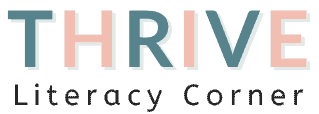
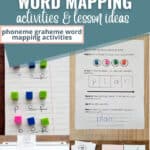
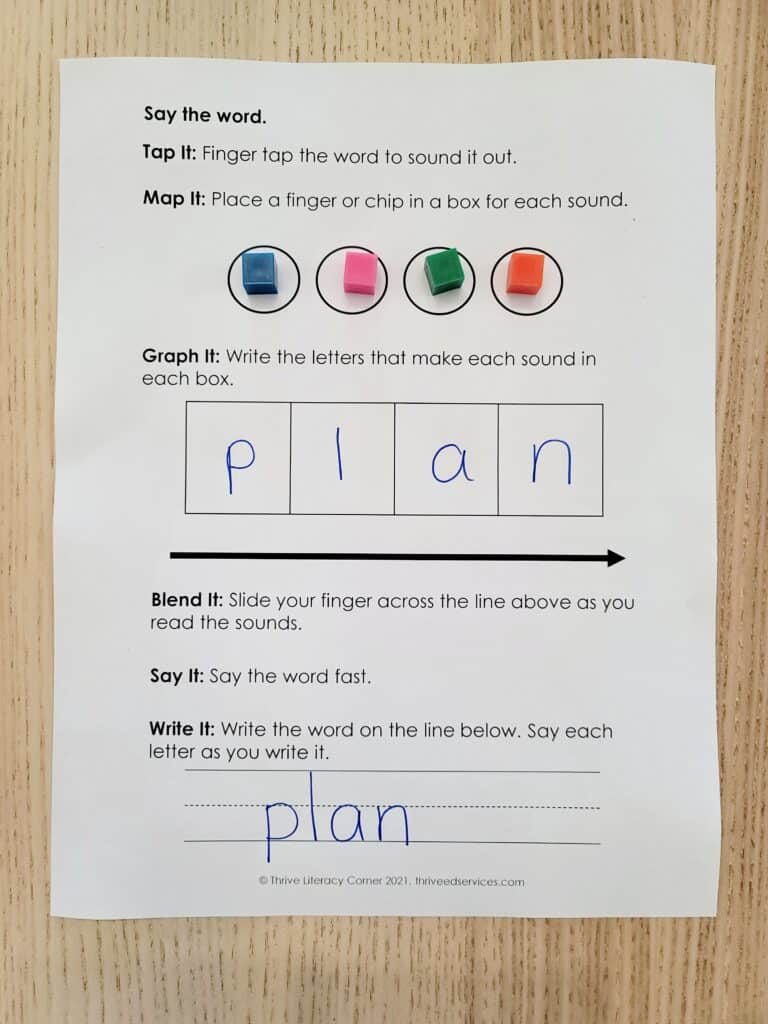
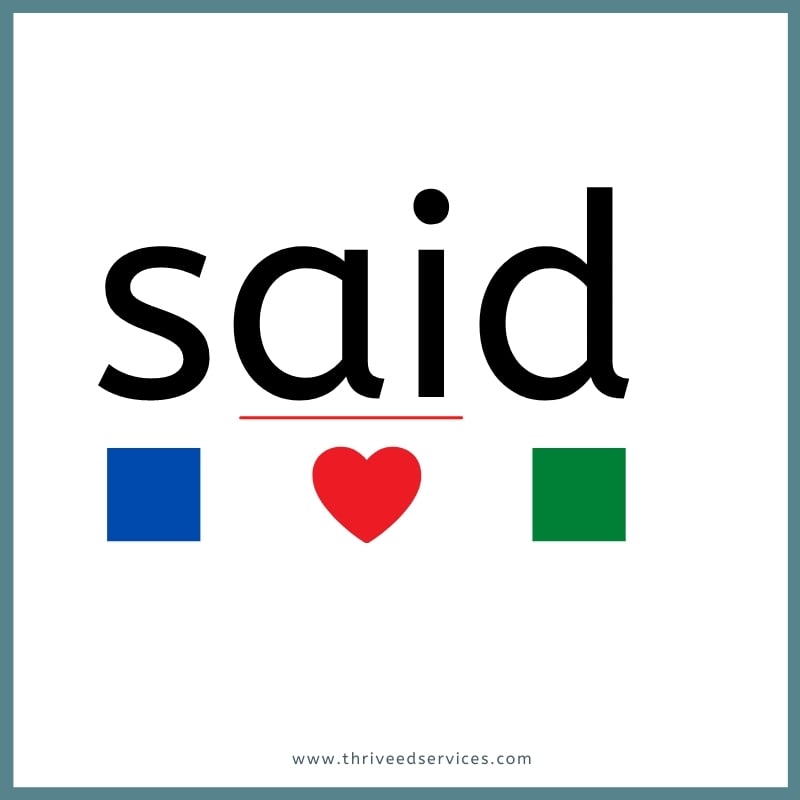
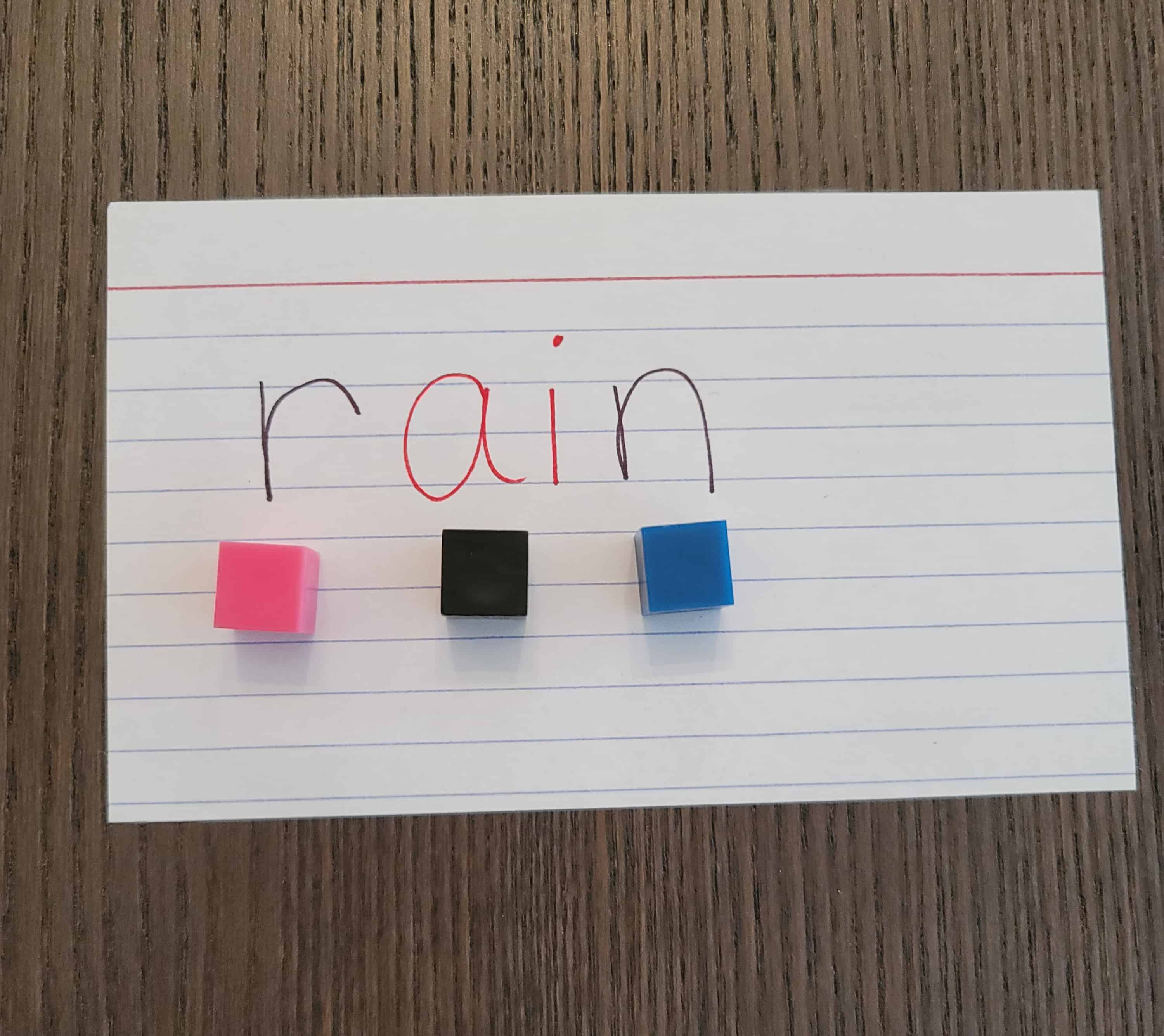
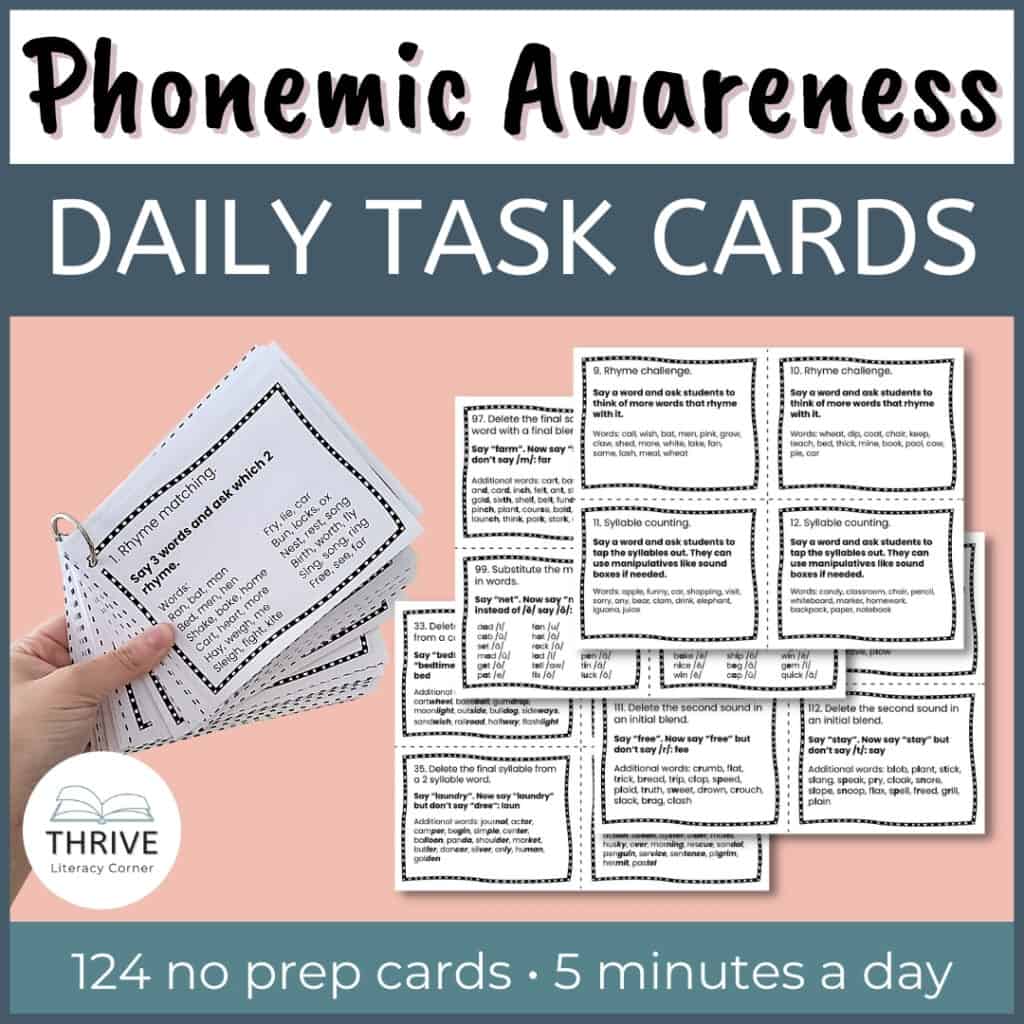
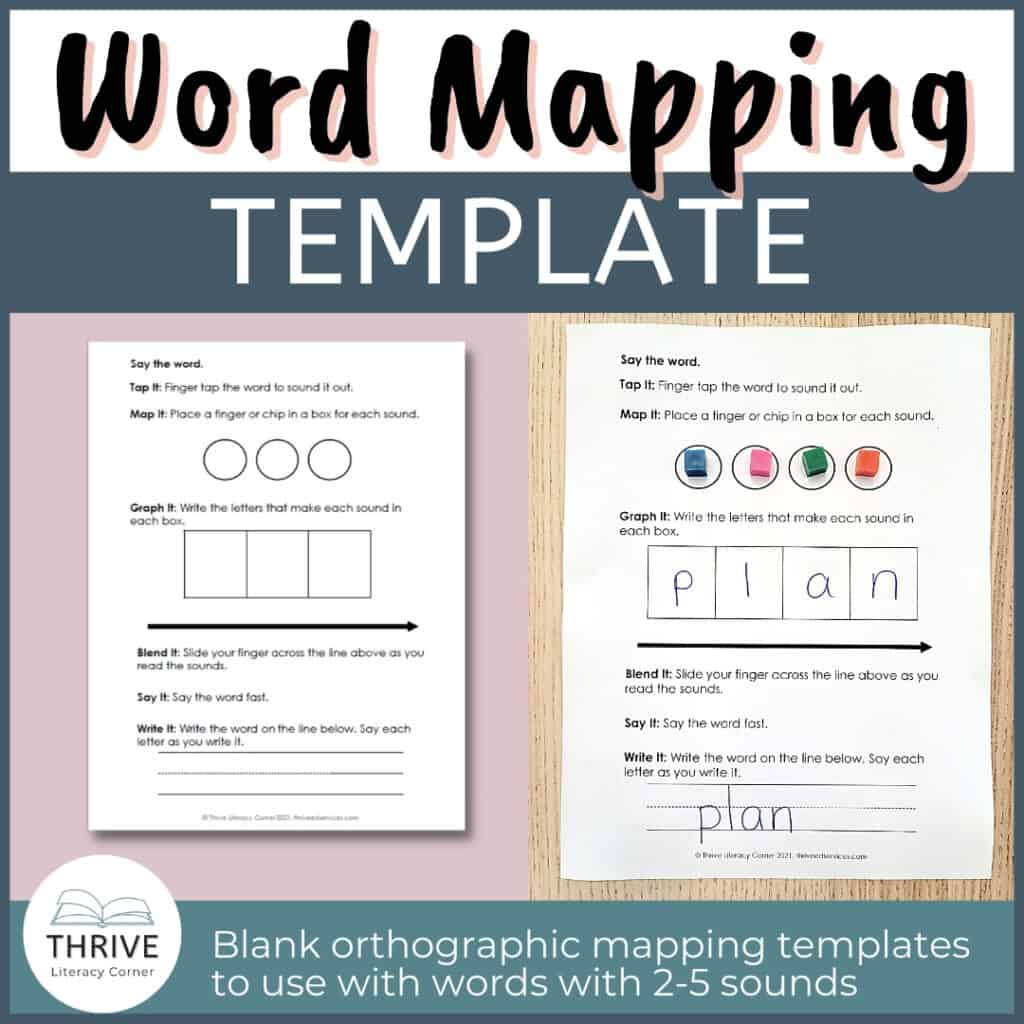


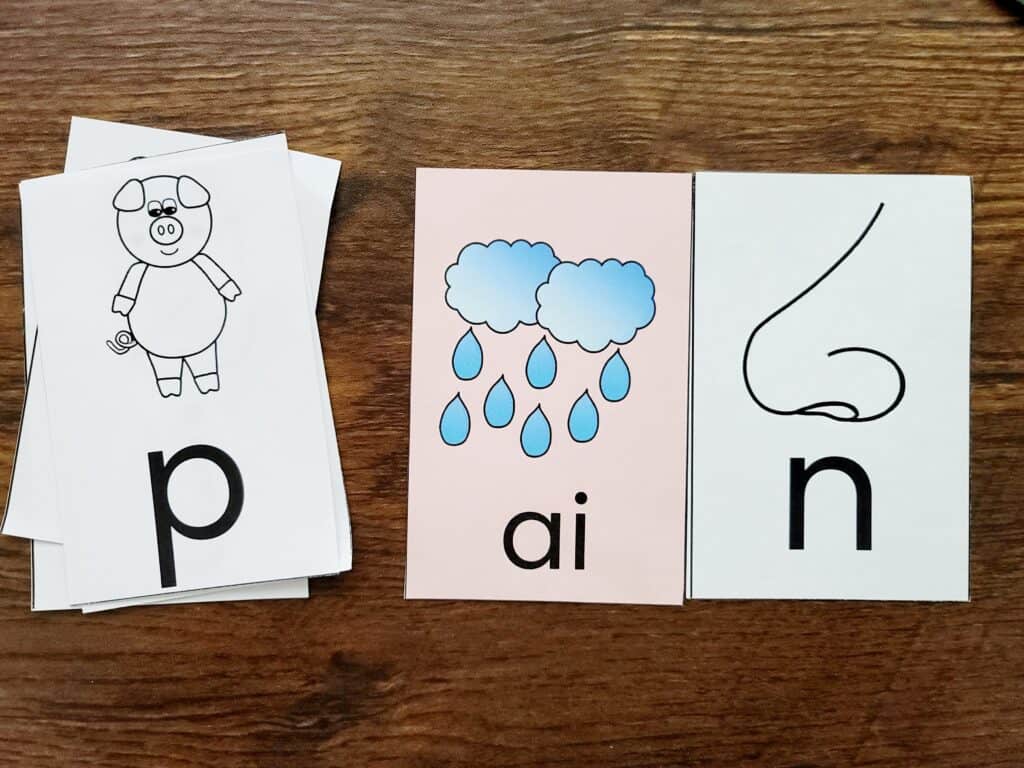
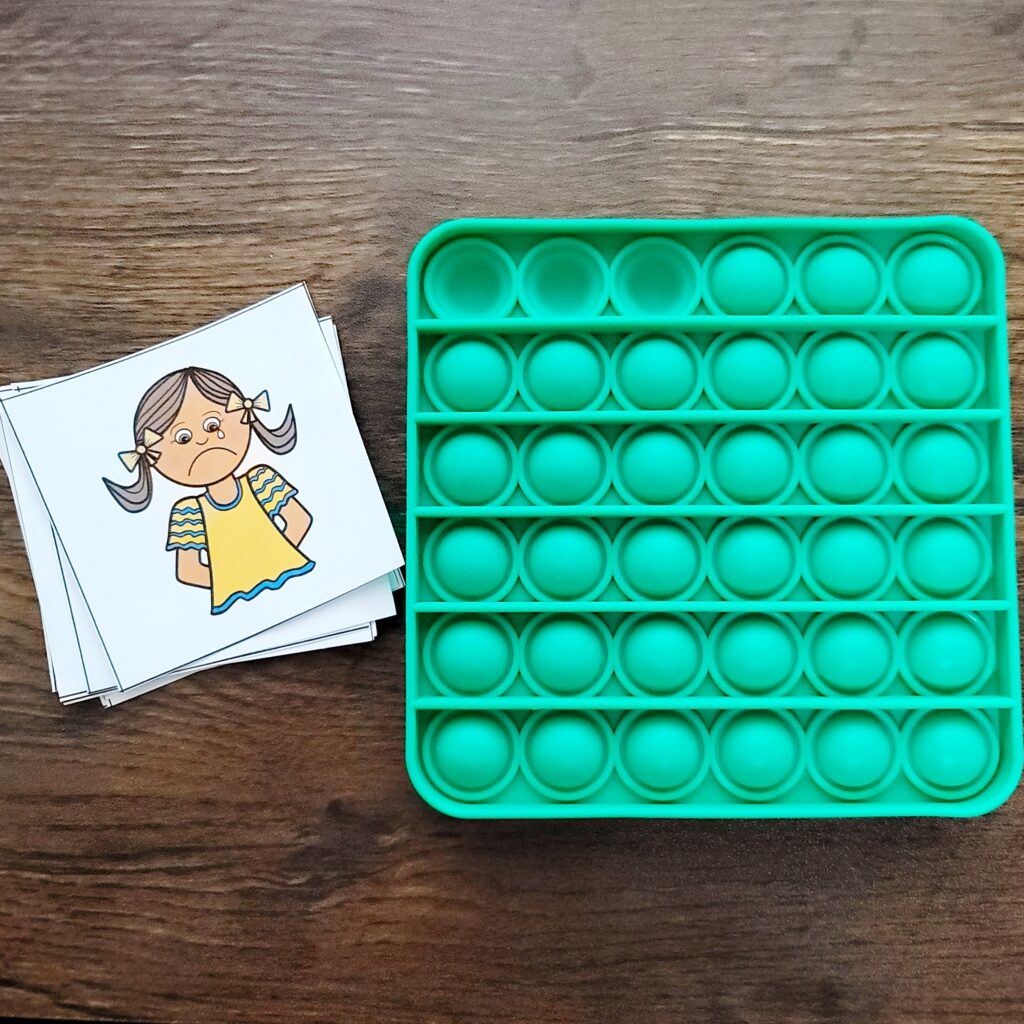

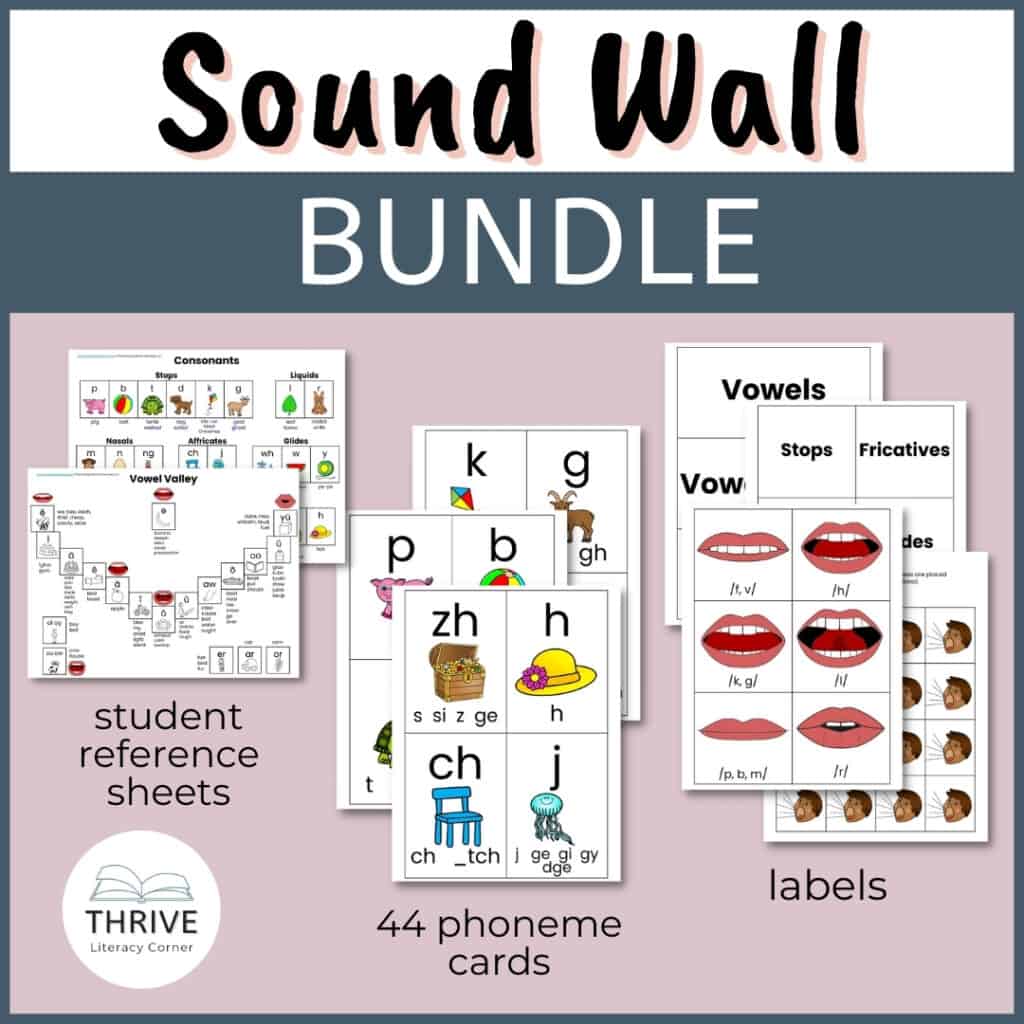


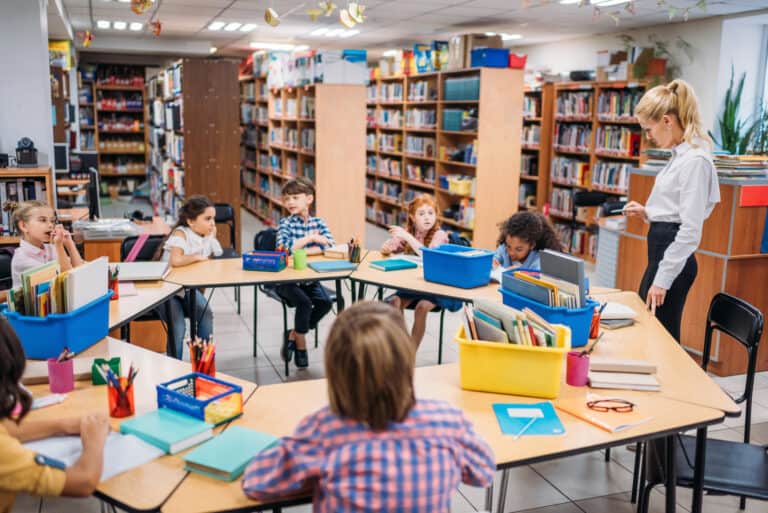
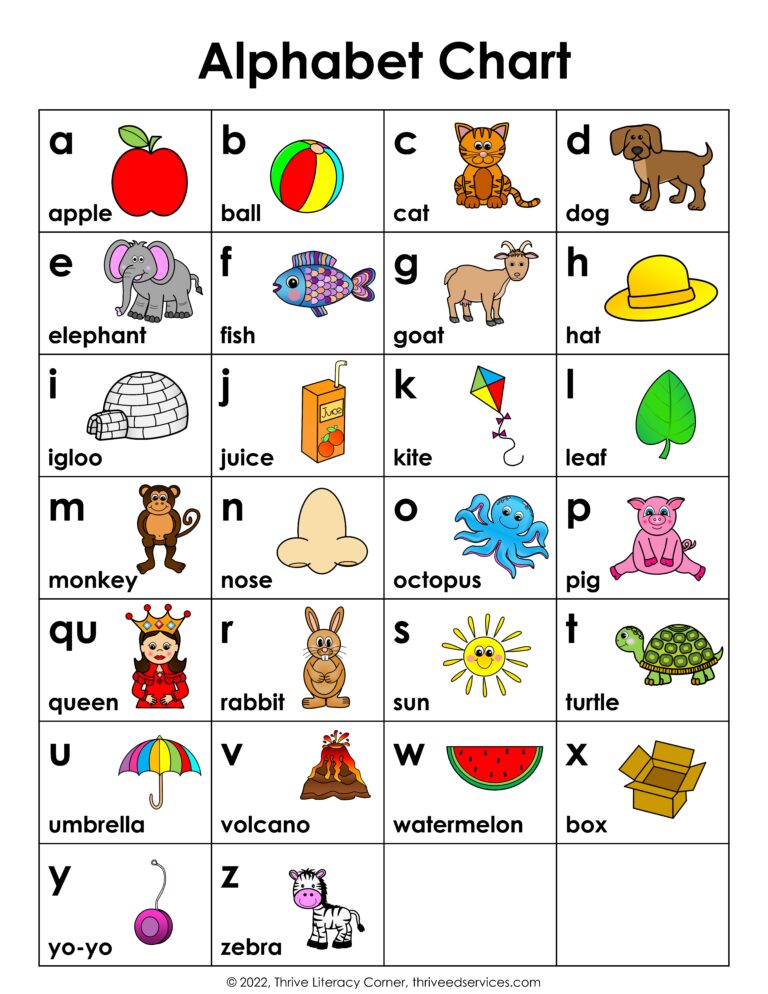
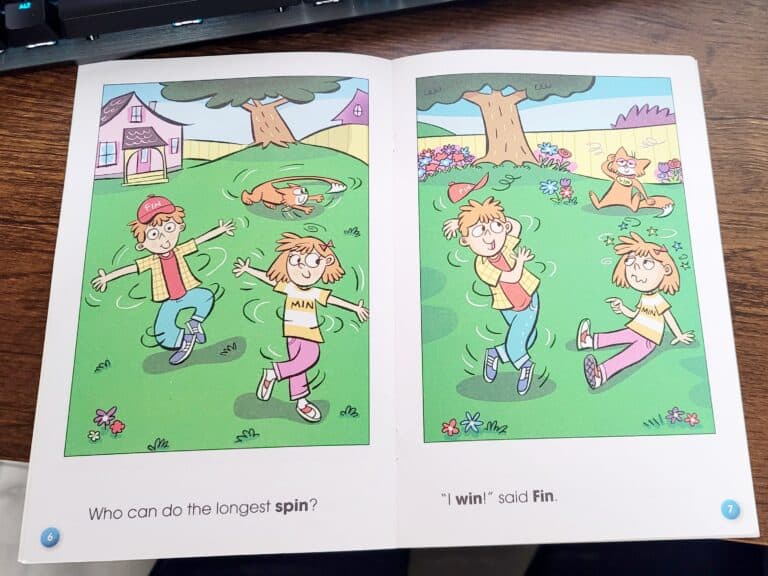
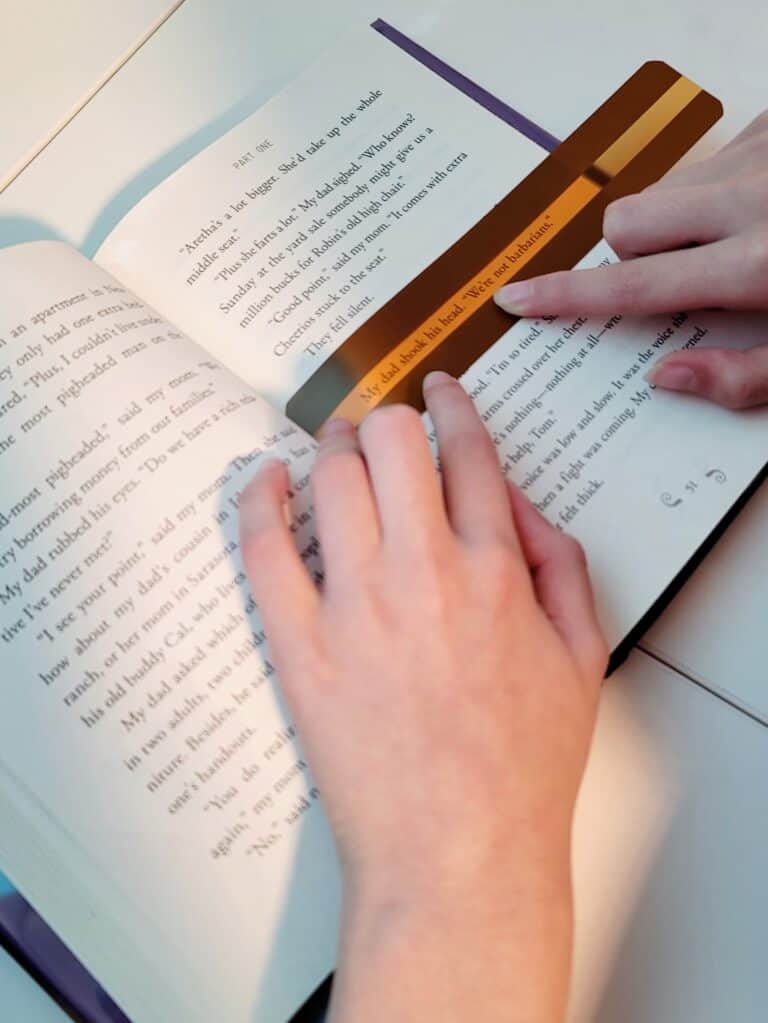
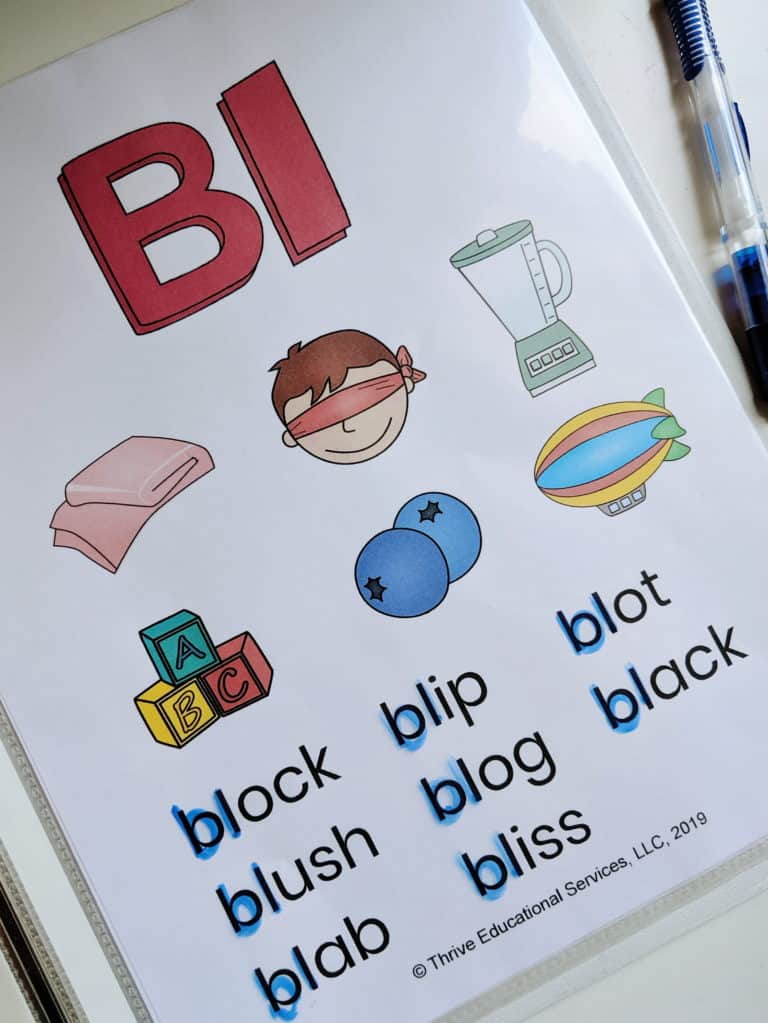
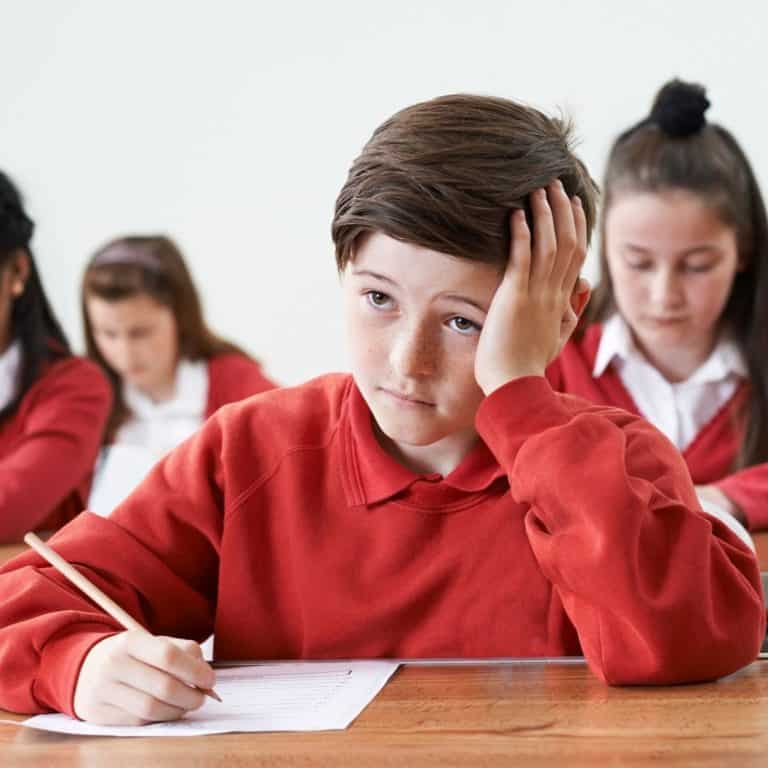
Thank you! This was very helpful in helping to teach my kids.
Great info! Thanks
ty 4 sharing ,so much to learn about Orthographic mapping ,im so excited to start studing on this & much more!!!
This is actually perfect for me right now!! Thank you so much for sharing!! Great information too!! Very helpful!
I can’t wait to use your amazing products. This is such a great company.
Thank you for this explanation.
Great information! Thank you